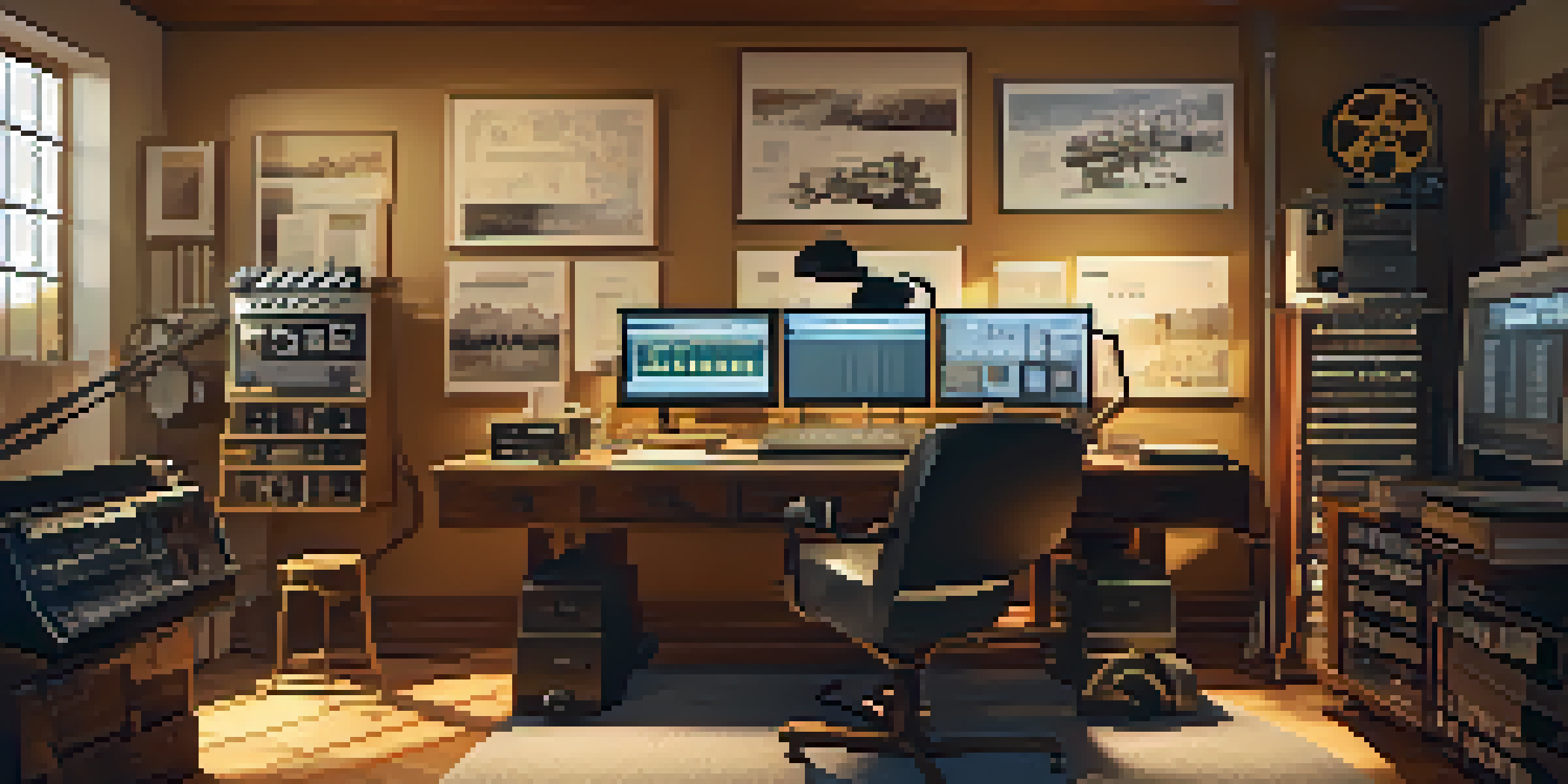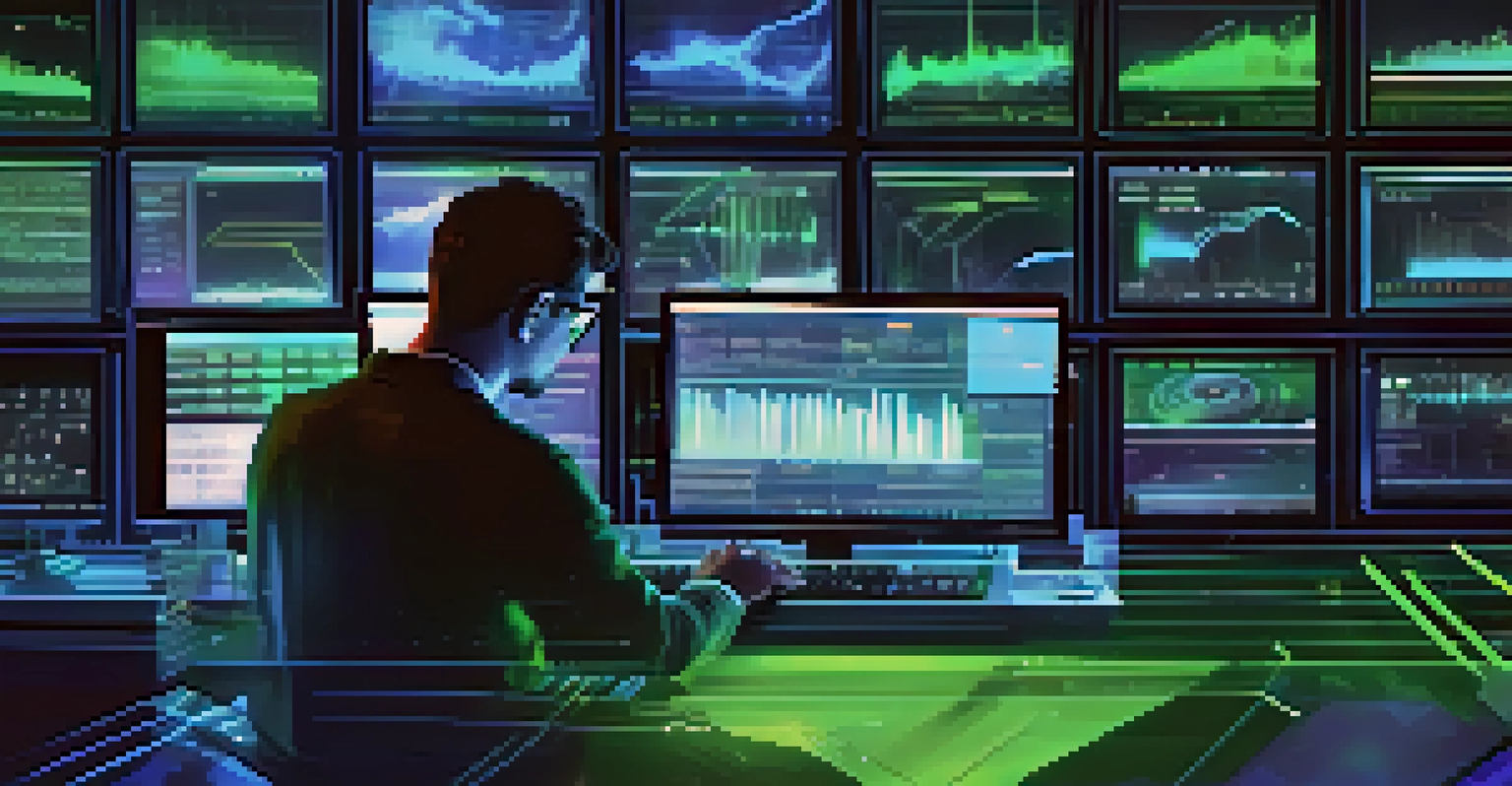Pacing in Film Editing: Finding the Perfect Balance

Understanding Pacing: The Heartbeat of Film Editing
Pacing in film editing refers to the rhythm and tempo of the narrative. It's not just about how fast or slow scenes cut, but how these decisions affect audience engagement. Think of pacing as the heartbeat of the story; it keeps viewers emotionally connected and invested.
Editing is the process of selecting and preparing written, visual, audio, and film media used to convey information or present a story.
A well-paced film has the power to evoke laughter, suspense, or sadness at the right moments. For instance, a fast-paced action scene can elevate adrenaline, while a slow, contemplative moment allows for reflection. This dynamic balance is crucial for maintaining viewer interest throughout the film.
In essence, pacing shapes the viewer’s experience, dictating when they feel excitement and when they pause to absorb the story. Understanding this concept is the first step toward mastering the art of editing.
The Role of Timing in Film Editing
Timing is a critical aspect of pacing that can make or break a film. It involves making precise decisions about when to cut from one scene to another, ensuring that each transition feels natural. A well-timed cut can heighten tension, while a poorly timed one can disrupt the flow and confuse the audience.

For example, consider the classic 'jump scare' in horror films. Editors meticulously time these cuts to maximize shock, often using silence leading up to the moment before a sudden sound or image. This careful manipulation of timing creates a visceral response from the audience.
Pacing Shapes Viewer Engagement
Pacing in film editing establishes the emotional connection, guiding viewers through moments of excitement and reflection.
Ultimately, effective timing allows editors to control the audience's emotional journey, guiding them through the highs and lows of the narrative with finesse.
Establishing Rhythm: The Importance of Scene Length
Scene length plays a significant role in establishing the overall rhythm of a film. Longer scenes can create a sense of calm or allow for character development, while shorter scenes can create urgency and keep the audience on the edge of their seats. It's all about finding the right balance for the story being told.
The essence of cinema is editing. It is the process of assembling images to create meaning.
For instance, a drama may benefit from longer scenes to explore character emotions deeply, while a thriller might require shorter, snappier cuts to maintain tension. Editors must consider the purpose of each scene and its contribution to the film's pacing.
By varying scene lengths strategically, editors can provide a dynamic viewing experience that reflects the film's themes and keeps viewers engaged.
Transitions: The Unsung Heroes of Pacing
Transitions are the bridges that connect scenes and play a vital role in pacing. These can be as simple as a fade or as complex as a montage, each serving to maintain the flow of the story. Effective transitions help the audience move seamlessly from one moment to the next without feeling jolted out of the narrative.
For example, a montage can compress time and convey a lot of information quickly, which can be ideal for setting up character arcs or plot developments. On the other hand, a slow dissolve might be better suited for emotional moments, allowing viewers to linger on the feelings being portrayed.
Timing Enhances Narrative Flow
Effective timing in cuts and transitions is crucial for maintaining narrative flow and maximizing emotional impact.
By thoughtfully crafting transitions, editors can enhance pacing and keep the viewer's emotional journey cohesive and engaging.
The Impact of Music and Sound on Pacing
Music and sound design are powerful tools that significantly impact pacing in film editing. The right score can elevate a scene, intensifying emotions or creating suspense. Editors often work closely with composers and sound designers to ensure that audio complements visual pacing seamlessly.
Consider a high-energy chase scene; a fast-paced score can heighten excitement, making viewers' hearts race along with the characters. Conversely, a slow, haunting melody can enhance the emotional weight of a dramatic moment, allowing viewers to feel the gravity of the situation.
By integrating sound effectively, editors can manipulate the film's rhythm, drawing audiences deeper into the story.
Character Arcs: Influencing Pacing Through Development
Character arcs are integral to storytelling and can significantly influence pacing. As characters evolve, the pacing may shift to reflect their emotional states or conflicts. Editors must pay attention to these changes to ensure that the pacing aligns with character development.
For instance, a character experiencing a turning point may lead to a sudden increase in pacing to match their emotional peak. Conversely, a character facing a setback may slow the pacing, allowing audiences to absorb the weight of the moment.
Character Development Influences Pacing
Character arcs play a significant role in pacing, as editors adjust the rhythm to align with the characters' emotional journeys.
By aligning pacing with character arcs, editors create a more immersive experience, making the audience feel the journey alongside the characters.
Balancing Pacing: The Editor's Artistry
Finding the perfect balance in pacing is an art form that requires skill and intuition. Editors must constantly evaluate how each cut, transition, and scene length contributes to the overall narrative flow. It's a delicate dance of knowing when to speed up and when to slow down.
For instance, a film may start with a fast pace to grab attention, then shift to slower moments for emotional depth, before ramping up again for the climax. This ebb and flow can lead to a more satisfying viewing experience, keeping the audience engaged throughout.

Ultimately, the editor's artistry lies in their ability to craft a cohesive and engaging story, making pacing a fundamental aspect of their work.